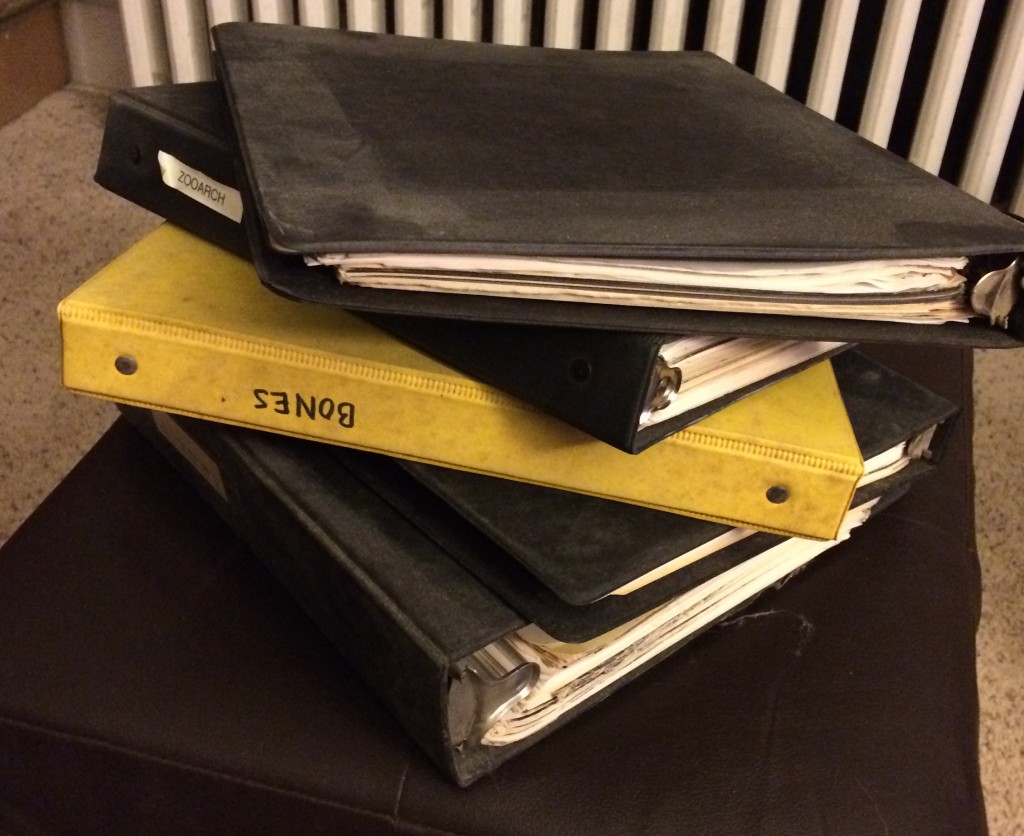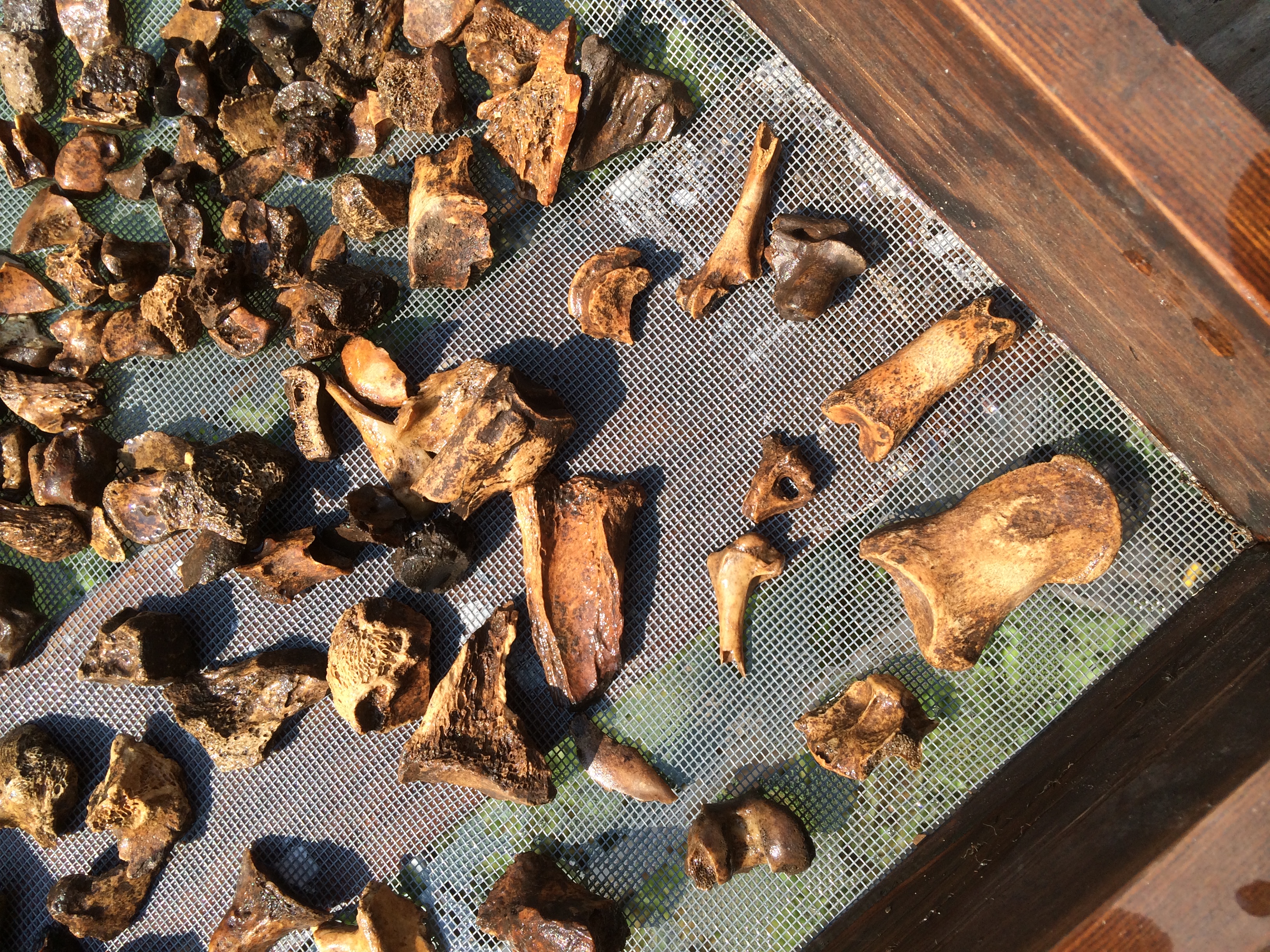One more for Halloween, from Jazz Age singer Lee Morse and the Blue Grass Boys:
Tag: bones
3D Printing of Passenger Pigeon “Artifictions”
Just published and open access is a new article that demonstrates the value and potential of 3D scanning and printing for osteological identification of passenger pigeons and other extinct or rare animals.
Some zooarchaeologists have been producing 3D images of animal bones for a while now. This article describes the next step, the creation of actual physical replicas (which they dub “artifictions”, as opposed to artifacts) using 3D printers. The practical goal is to increase the reliable identification of animal species (especially rare or difficult to distinguish ones) in archaeological faunal assemblages, which now is dependent on the zooarchaeologist having ready access to a large and varied collection of actual animal skeletons. Why aren’t digital representations of bones enough?
because the scale of digital models is based on the size of the screen upon which they are viewed, making identifications by direct comparison difficult. Artifictions, however, can be scaled accurately and physically placed alongside actual skeletal elements to enable more direct visual comparison and identifica-tion of specimens, comparable to the use of a reference specimen from a comparative skeletal collection. Additionally, the 3D scanned models can be used for species identification based on selected point-to-point morphometric measurements. (p. 16)
For examples, the authors use the passenger pigeon and the harelip sucker, a freshwater fish that, like the passenger pigeon, went extinct near the beginning of the twentieth century.
While there are still some technical (and budgetary) limitations with the 3D printing process, they argue convincingly that “this is the only non-commercial approach that will make available physical representations of skeletal elements from extinct species for quick distribution to a large number of researchers.” (p. 19) Efforts are underway to make these models available for download. Next, somebody needs to buy me a 3D printer.
Reference:
Manzano, Bruce L., Bernard K. Means, Christopher T. Begley, and Mariana Zechini
2015 Using Digital 3D Scanning to Create “Artifictions” of the Passenger Pigeon and Harelip Sucker, Two Extinct Species in Eastern North America: The Future Examines the Past. Ethnobiology Letters 6(2):15-24.
Turkey Archaeology: A Call for Papers
Journal of Archaeological Science: Reports Special Issue Call for Papers: Turkey Husbandry and Domestication: Recent Advances
The turkey (Meleagris gallopavo) is the only domesticated vertebrate to originate from North America. Its history of use and domestication is therefore of great importance to understanding the process, timing, practice and spread of New World animal husbandry. This special issue therefore brings together recent research papers that advance our understanding of turkey use and domestication through inter-disciplinary work involving skeletal morphology, paleopathology, osteometry, stable isotopes, and DNA analysis. We seek papers that span the entire history of turkey use and domestication from their earliest appearance in the archaeological record to their colonial period diffusion outside the Americas. Geographic coverage is sought from all areas of the species historic range including Mesoamerica, the American Southwest, and Eastern North America to generate more dialogue among researchers independently studying the topic in these cultural regions. Evidence documenting turkey transport outside the Americas is also relevant to this topic. Papers that demonstrate advances in inter-disciplinary and scientific approaches to studying turkey use and domestication are particularly welcomed.
Schedule:
First draft of manuscripts due: August 1, 2015
Notification of Acceptance/Revisions: Sept. 2015 (anticipated)
Final paper production deadline: Nov/Dec. 2016 (anticipated)
Expected Publication date: Spring 2016
Submission Guidelines:
Submissions to the Journal of Archaeological Science: Reports are made on-line using through the Elsevier Publishing system. Through the on-line system, you will be able to submit your manuscript directly to the special issue. Registration, on-line submission login, and author guidelines are available at http://www.journals.elsevier.com/journal-of-archaeological-science-reports/.
Optional open access publishing (on a per article basis) will be available for this special issue.
All submitted papers will be subject to regular peer-review procedures. Papers should not typically exceed 5000 words (excluding tables and references) and should not have been published previously nor be currently under consideration for publication elsewhere in any other format (print or electronic).
Please contact the lead guest editor, Erin Thornton (erin.thornton@wsu.edu), for additional information.
Astragali from Lamoka Lake
Back to the Bones
It’s been a while since we’ve written anything about the actual archaeology of the Lamoka Lake site, but that’s about to change. I’m starting the identification of a large assemblage of animal bones from the site that hasn’t been studied before. The first step is to get out the bone binders with photocopied and hand-drawn reference material. These are in need of some new binders.
The bone identification guides are also getting pulled out of the bookshelves. Yes, I know there are some duplicates.




